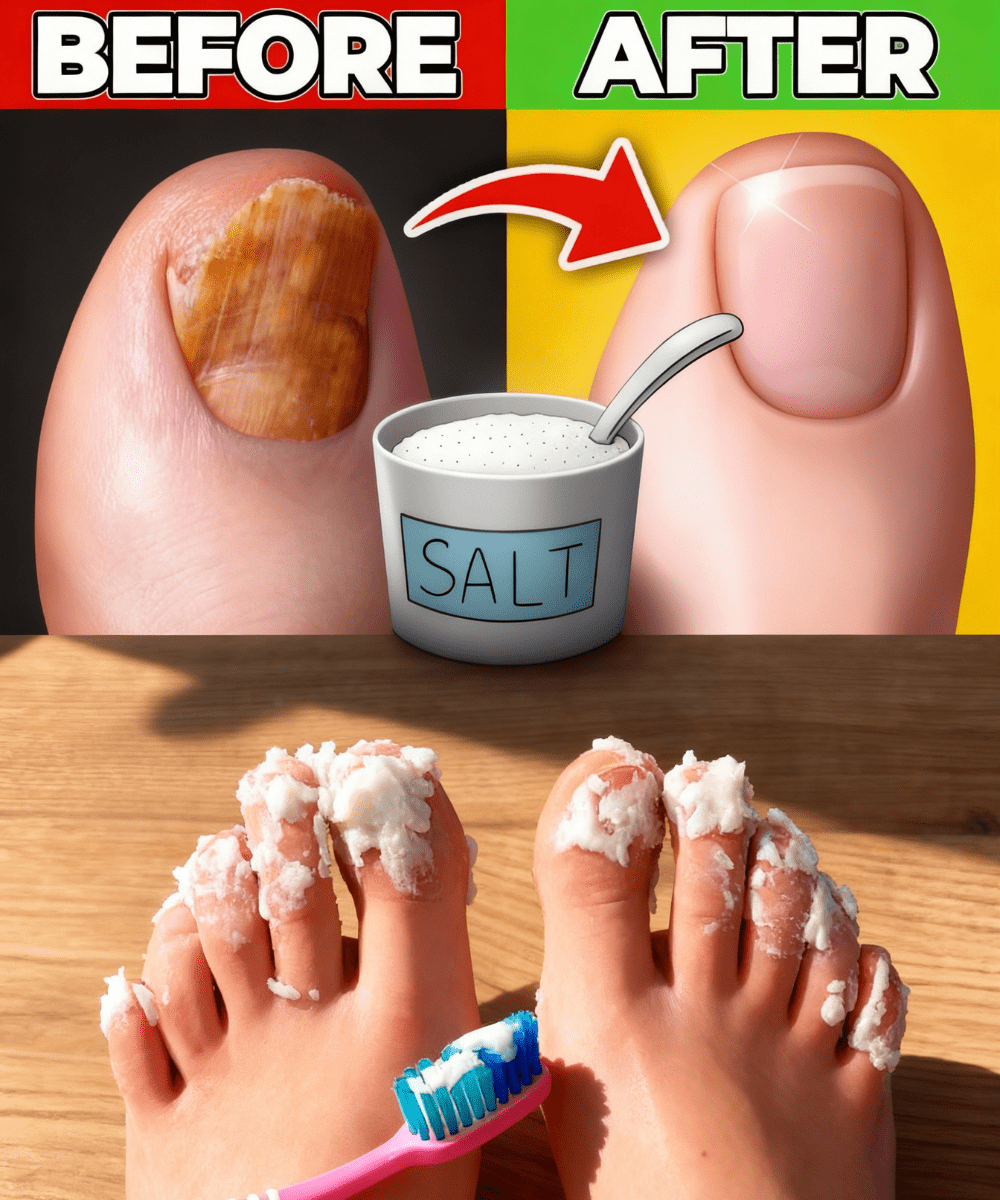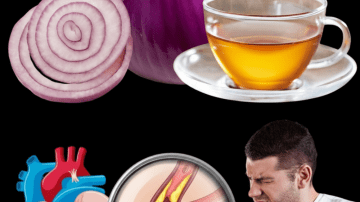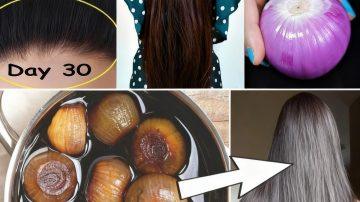Do you dread taking off your shoes? Are you constantly hiding your feet, feeling that familiar stab of self-consciousness when the topic of open-toed footwear comes up? If you are one of the countless individuals battling the tenacious, frustrating enemy known as nail fungus (Onychomycosis), you know the cycle of discoloration, thickening, and brittleness all too well. This persistent, stubborn condition doesn’t just impact your nails; it silently erodes your confidence and your willingness to step out freely.
The market is flooded with expensive, sometimes harsh, chemical solutions that promise relief but often lead to disappointment, complicated application, or unwanted side effects.
What if the most potent, most affordable, and arguably the safest solution to eradicate this fungal foe wasn’t a pharmaceutical secret, but a simple, synergistic combination of three ingredients already sitting in your home?
We’re talking about a powerful, three-part natural arsenal: Baking Soda, Vinegar, and Tea Tree Oil. This isn’t just an old wives’ tale; this is a scientifically sound, pH-altering, antiseptic powerhouse designed to create an environment where fungus cannot possibly survive. This deep-dive article will guide you through the exact science of this triple-action remedy, provide detailed instructions for maximum efficacy, and equip you with the essential habits to ensure your nails remain clear, healthy, and beautiful for good. Get ready to reclaim your nail health and ditch the shame, naturally.

🔬 The Power Triangle: How Three Household Staples Decimate Fungal Growth
The success of this remedy lies in the complementary actions of its three components, each targeting a different vulnerability of the fungal organism.
1. 🍚 Baking Soda: The Alkalizing Fungal Inhibitor
Fungi, including the species that cause onychomycosis, thrive in acidic environments. Their optimal breeding ground is moist, slightly acidic, and warm—a perfect description of the inside of a shoe.
Baking soda (Sodium Bicarbonate) is a natural, gentle, yet highly effective alkaline substance.
- Disrupting the Ecosystem: When applied, baking soda instantly raises the pH level of the nail surface and surrounding skin. By creating an alkaline environment, it makes the habitat suddenly inhospitable for fungal proliferation, actively stalling the infection’s growth and preventing it from spreading to other nails.
- Natural Deodorizer and Cleanser: As a bonus, baking soda absorbs moisture and neutralizes odors often associated with persistent fungal infections, ensuring the area is clean and dry.
2. 🍎 Vinegar (ACV or White): The Penetrating Antifungal Acid
While fungi thrive in slightly acidic conditions, they are surprisingly vulnerable to higher concentrations of acid. This is where Vinegar, either the widely popular Apple Cider Vinegar (ACV) or common White Vinegar, steps in as the primary killer.
Vinegar contains acetic acid, a compound proven for centuries as a potent antimicrobial agent.
- Deep Penetration: The acidity of the vinegar acts as a powerful solvent, allowing it to penetrate the hardened, thickened outer layers of the infected nail. This is crucial because the fungus often lives deep within the nail bed, protecting itself from topical treatments.
- Fungicidal Action: Once the acetic acid reaches the deeper layers, it works to directly destroy the fungal cell structure and dramatically alter the environment, effectively eliminating the fungus at its source. It literally works by stripping the fungus of its defense mechanisms and nourishment.
3. 🌿 Tea Tree Oil: Nature’s Gold Standard Antiseptic
Tea Tree Oil (Melaleuca Alternifolia) is the powerhouse essential oil recognized globally for its extraordinary antifungal, antibacterial, and antiseptic properties. It is the crucial third element that ensures the infection is not only defeated but prevented from returning.
- Targeted Fungicidal Compound: Tea tree oil contains a compound called Terpinen-4-ol, which studies have repeatedly shown is highly effective against a wide range of dermatophytes (the fungi that cause nail infections). It physically interferes with the fungal membrane, leading to its collapse.
- Healing and Prevention: Beyond killing the infection, tea tree oil soothes the underlying skin, reduces inflammation, and promotes the regeneration of healthier nail tissue. It creates a protective layer, acting as a natural shield against re-infection.
Together, this trio delivers a perfect one-two-three punch: Alkaline Disruption (Baking Soda) + Acidic Eradication (Vinegar) + Antiseptic Shield (Tea Tree Oil).
🧪 The Remedy Protocol: Mixing Your Fungus-Fighting Elixir
Precision and consistency are everything when dealing with nail fungus. Follow these instructions exactly to create a potent, professional-grade home remedy.
Ingredients You Need
- 2 Tablespoons of Baking Soda
- 1 Tablespoon of Vinegar (Apple Cider or White, both are effective)
- 10 Drops of Pure Tea Tree Essential Oil (ensure it’s 100% pure)
- Warm Water (for soaking)
- A Small Mixing Bowl
- Cotton Swabs or a Clean Applicator Brush
Step-by-Step Application Guide
Phase I: Preparation and Activation
- The Fizzing Activation: In your small bowl, combine the Baking Soda and Vinegar. Do not be alarmed by the vigorous fizzing and bubbling—this is the natural acid-base reaction, and it confirms the ingredients are activating their neutralizing power. Once the fizzing subsides, add the 10 drops of Tea Tree Essential Oil. Mix thoroughly until you have a smooth paste/liquid mixture.
- Soften the Barrier: Fill a small basin with warm water. Soak the affected foot/nails for approximately 10 minutes. This crucial step softens the thickened, hard nail plate, allowing the active ingredients to penetrate deeper into the nail bed.
- Thorough Drying: Remove your foot from the water. It is absolutely vital that you pat the entire foot and the affected nails completely dry with a clean, dedicated towel. Fungi thrive in moisture, so leaving any dampness counteracts the treatment.
Phase II: Targeted Treatment
- Pinpoint Application: Using a fresh cotton swab, a cotton ball, or a clean, small cosmetic brush, apply the prepared remedy mixture directly and liberally onto the infected nail(s).
- Critical Saturation: Ensure you work the mixture under the edge of the nail, into the surrounding skin, and into any cracks or fissures. The goal is complete saturation of the infected tissue.
- The Wait: Allow the remedy to remain on the nails for 20–30 minutes. This gives the acetic acid time to penetrate and the antifungal compounds time to work their magic.
- Rinse and Finish: Rinse the treated nails with warm water, and then pat them meticulously dry once more.
Optimal Routine for Guaranteed Results
For mild to moderate infections, this treatment must be applied twice daily—once in the morning and once at night—without fail. Consistency is the most significant factor in overcoming nail fungus. Continue the treatment until the infected nail has completely grown out and been replaced by a clear, healthy nail. This can take several months.

🛡️ Beyond the Treatment: Essential Habits for Permanent Nail Health
Topical treatment is only half the battle. To prevent recurrence and support healthy growth, you must adopt key foot hygiene habits.
- Regular Nail Trimming: Keep your nails short and cleanly trimmed. Regularly cutting the nail reduces pressure, eliminates the most infected portions, and significantly increases the efficacy of the topical remedy by minimizing the surface area the fungus can hide under.
- Invest in Breathable Footwear: 👟 Avoid wearing the same pair of closed shoes two days in a row. Fungus loves the moist, dark environment inside shoes. Opt for leather, canvas, or other breathable materials that allow air circulation. Change your socks immediately after any strenuous activity or when they become damp.
- Maintain Sterilization of Tools: Never share nail clippers, files, or buffers. Fungal spores are easily transferred. After each use on an infected nail, sterilize your tools by soaking them in alcohol or a bleach solution. Consider using disposable files.
- The Power of Dryness: Wash your feet daily with soap and water, but the critical step is the drying. Use a dedicated towel and focus on drying every crease and space, especially between the toes. A hairdryer set to a cool setting can be surprisingly effective for a truly dry finish.
- Socks Matter: Opt for socks made of moisture-wicking fabrics like wool, certain synthetics, or copper-infused materials, which naturally resist microbial growth. Avoid heavy cotton that retains moisture.
🛑 When to Stop Googling and Consult a Professional
While this natural remedy is incredibly effective for the vast majority of mild to moderate onychomycosis cases, there are situations where a doctor’s intervention is necessary.
- No Improvement After Several Weeks: If, after 4–6 weeks of consistent, twice-daily application, you see absolutely no sign of a healthy nail growing in at the cuticle, the infection may be too deep or severe for topical treatment alone.
- Pain, Swelling, or Severe Discomfort: Any significant pain, redness, discharge, or swelling surrounding the nail may indicate a secondary bacterial infection that requires prescription medication.
- Underlying Health Conditions: If you have Diabetes, any circulatory issues, or a compromised immune system, it is imperative to consult a podiatrist or dermatologist immediately. Foot and nail infections can lead to serious complications in these cases.
Fighting nail fungus is a test of patience and discipline. But the simple, affordable, and scientifically sound combination of baking soda, vinegar, and tea tree oil provides a pathway back to clear, beautiful nails without the worry of harsh chemicals. By integrating this powerful remedy with strict hygiene habits, you take back control of your foot health and, more importantly, your confidence.
Take the first step today: Mix your batch and commit to the clear nail revolution!
Would you be interested in a list of foods and supplements that can boost your internal immunity to better fight fungal infections from within?






